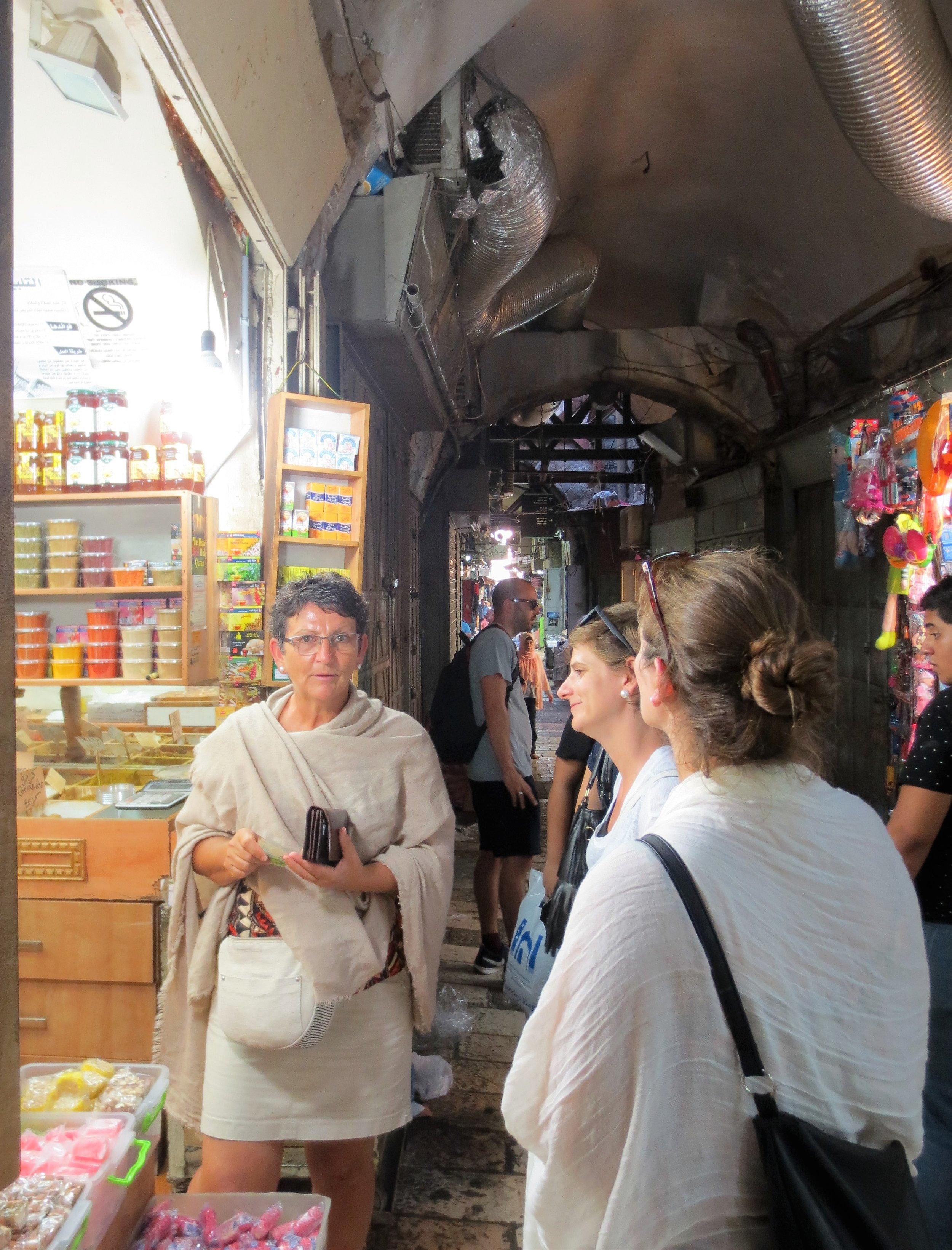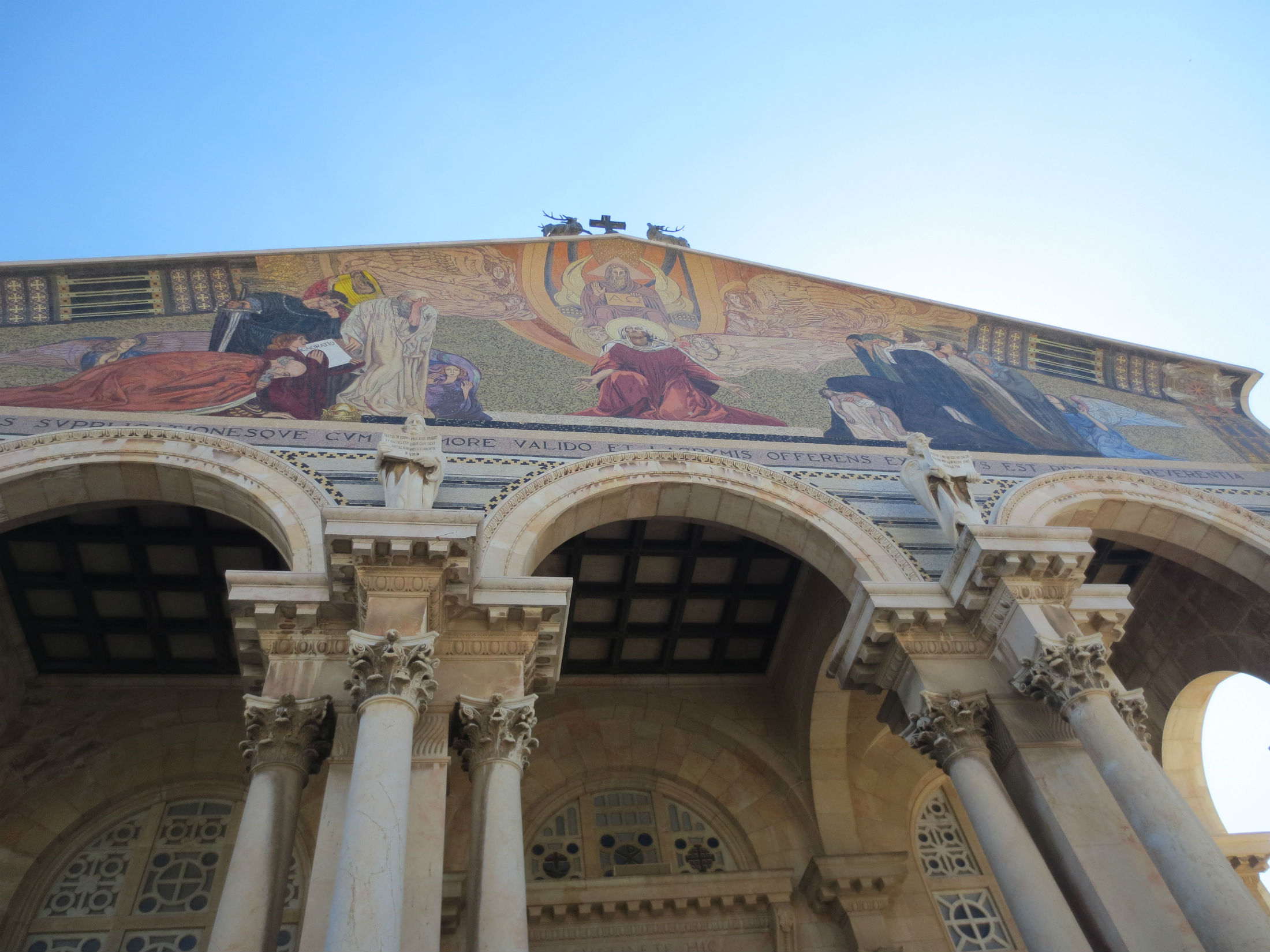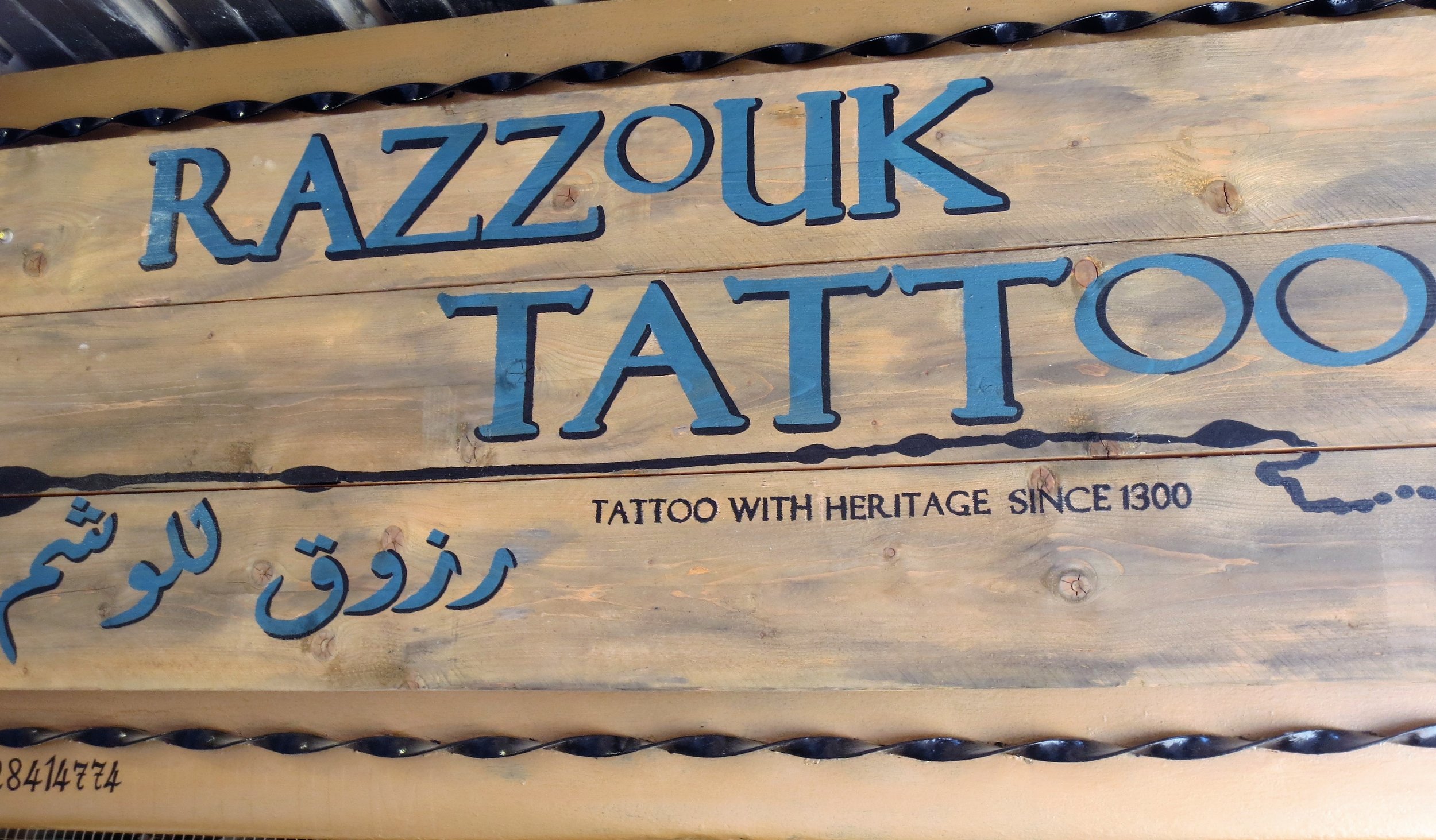We saw a country living with the conflict between reason, faith and hatred. High on our bucket list, we travelled for a few days to Israel and the West Bank with a backpack full of expectations. Our guide Moshe picked us up in Jerusalem and from the Mount of Olives we enjoyed the view across the Jewish cemetery onto the Temple Mount.
After that, Francien and I, together with Marcella, Winnie and her boyfriend Brad walked through Jaffa gate into a maze of narrow stepped cobblestone streets of the Old City. We saw stone houses, courtyards, shops, small hospices for the pilgrims, Temple Mount, Churches, Synagogues and Mosques all surrounded by the massive Ottoman city walls. This tiny area (1 km2) packs more cultural and heritage together than any other place I have seen before. And believe me, every bit of space is used. The souks in the Muslim quarter are similar to the once we used to visit in Kuwait, evoking some fond memories. Throngs of Indian, German, Italian, Japanese tourists hustled through the narrow allies, some buying good-luck-charms like wooden crosses, candles and icons. But it was not crowded and we enjoyed exploring the Jewish, Christian, Armenian and Muslim quarters for many hours. I watched a young European couple glimpsing and snapping photos at one of the Stations of the Cross on the Via Delarosa, posing in front of it to take selfies. Looking at all those pilgrims I wondered what this evoked in them: disappointment, wonder, delight, overwhelmed, inspiration? I did not see much emotions in their faces. For me it was a confusing sight as I expected a much more biblical atmosphere!
Needing my afternoon infusion of caffeine, sweat-streaked we sat down in a sidewalk café and looked at the people passing by: I saw men wearing their yarmulke, a thin, rounded skullcap worn by observant Jewish men. Others wore black robes (caftan) and big black fur hats. Armed soldiers passed by. Pilgrims prayed at a Station on the Via Delarosa.
We visited a tattoo shop which makes religious tattoos for pilgrims since 1300 AD. On the rooftop of the Austrian hospice we had the Old City to ourselves as we gazed over its cupped roofs, city walls, Ottoman towers, spires and minarets.
We then stopped at the Western Wall in the Jewish quarter, one of the world’s great sights. The feeling of this place was not like any other. I ritually washed my hands on the plaza in front of the Western Wall, watched Jews prepare and do their prayers. It was all calm and peaceful. Hundreds of male and female Jews (in separate sections) were standing or sitting. The men wore prayer shawls and tefillin. They were bowing as if they read, chanting and reciting, moving themselves backward and forward. The men sang psalms and read from Torah scrolls wearing their prayer cloth, to commemorated the destruction of what they believe was their second temple. Some kissed the Wall.
‘You can write a wish on a note paper and push it between the stones’, Moshe suggested to me. ‘No thanks, I do not believe in that’, I replied. – Hmm, maybe I should at least have tried!
The Western Wall looked smaller as I had expected seeing it from TV images. However, I was struck by the power of all that faith I saw around me!
One evening we watched the inaugural ceremony of the Golani Brigade on the Western Wall Plaza. 500 soldiers swore their loyalty to the IDF and to the State of Israel. A happy festive gathering closed with the national anthem. After the completion of their six-month training, these young infanterists will now be serving two and a half years in combat units around the country.
One afternoon, we followed Moshe into the Church of the Holy Sepulchre, the most holy place for Christians. According to legend, here Jesus died and resurrected. The 4th century Church is shared by the Greek Orthodox, the Armenian Orthodox, the Catholic, the Egyptian Coptic and the Syriactic Church. Believe it or not, this has led to fist-fights between the different monks during special ceremonies, disputing each other’s rights of ownership of certain sections of the Church! My atheist mind simply cannot understand this. This is an example of religious insanity. The Church was echoing and a priest wearing a black robe standing with folded arms, caught my eye. He was not amused by the sight of so many visitors. Pilgrims from India prayed and touched the stone on which according to the legend Jesus was prepared for his burial. I did not see much emotion, instead lots of picture taking and talking. Normally I find it restful to sit in a church and watch people pray or light candles. But not here!! I found this too much crowded, so I did not stay longer than a few minutes. It was disappointing not to feel this biblical vibe as I had witnessed when we visited religious sites in Jordan a few years ago.
Certain activities seem synonymous with visiting Jerusalem: The Dome of the Rock, The Western Wall, The Holy Church of the Sepulchre, but anything involving Palestine? Not so much. But the next day our Palestinian guide Mohammed awaited us at the border crossing between Israel and the West Bank. Passing through the security barrier I got a rather depressing feeling. For the lack of better words: an outrages eight-meter-high concrete wall laced with watch towers and monitored by camera’s! Looked and felt very similar to the infamous Berlin Wall separating East and West Europe Francien and I had crossed back in 1984.
Security is the most important word in Israel, in particular now after a string of knife attacks in the Old City: police cars marked ‘Police משטרתישראל’, checkpoints, watchtowers, electrified fences, barbed wire, barricades, patrol roads, army patrols! And everywhere warning signs: ‘do not enter’. During our second day in the Old City of Jerusalem, the military closed a few alleys in the Jewish quarter and the next day we read in the paper that a Palestinian was shot as he tried to stab an IDF soldier!
Mohammed explained to us the A, B, C type security zones; Israeli ID holders, Israeli citizens, Jews, Israeli Arabs, Palestinians, Muslims, Christians..... All these classifications mixed into a system to suppress the Palestinians and increase Israeli control. Jews cannot enter the West Bank, Palestinians need special pass to cross into Israel, Muslims not allowed at Western Wall, none Jews not allowed in Synagogues, Jews not allowed in the Mosques,....... Not to forget, we as tourists could not go onto Temple Mount to see the Dome of the Rock, because of security reasons!
An endless list of not allowed to does. Did I mention all these classifications and restrictions are similar to the Apartheid system Francien and I used to live with in the early eighties in South Africa? No wonder trust is at short supply here.
We visited the Aida refugee camp just outside Bethlehem. Built in 1948, it is now a well-established village with roads, shops, Mosques, schools and houses. Kids played with toy guns. A taxi driver drove by and shouted through his open car window: ‘We do not like Americans here!’. Much to Mohammeds chagrin his people received no help from the rich Arab Gulf countries. ‘I do not want to use the f-word’ Mohammed said, ‘but those Gulf Arabs are not our friends…….’, he continued rather irritated. This tour turned out to be very political…….. From there it took us 45 minutes to drive to Hebron. It is a hilly country site and we saw many Jewish settlements heavenly guarded by the Israeli army. Inside the city of Hebron (400.000 inhabitants), 500 Jewish settlers have made it their home in the old city centre, protected by 1600 Israeli soldiers. There was clearly a lot of tension in the air with soldiers at the many check points controlling all people. We went through turnstile gates and metal detectors; our passports checked several times by Israeli soldiers. Narrow alleyways were covered by nets to catch the trash thrown down on Arab shops by the Jewish families living above. We saw Jewish settlers carrying machine guns walking outside their protected compounds.
We visited the Cave of the Patriarchs. Legend says Abraham, his wife and children were buried here 3000 years ago in a number of underground chambers. Half of the Ibrahimi Mosque ( الحرم الإبراهيمي ) was converted into a Synagogue after a massacre took place there in 1994. With two separated entrances, it was divided into two places of worship with a wall and bullet proof glass in between. First we walked into the Mosque and Muslims were praying around tombs covered with green cloth. Entering from the other side, I strolled through the Synagogue wearing a kippa. The only people I saw praying were heavily armed Israeli soldiers. I sensed no religious atmosphere at all; instead security everywhere and this constant tension in the air. Alas, another outrages example of religious madness!
After lunch with a Palestinian family we drove back to Bethlehem and stopped at the place where Christ was supposed to be born (not all Christian dominations agree even on that!) When we walked through the door of the Nativity Church a small sign caught my eye: ‘You enter as tourist, you leave as pilgrim’. Not for me! The Church was small and overfilled with tourists, all trying to descend into the Grotto. This Church is also managed by clerics from several Christian denominations and therefore the Palestinian police controlled the order between the Armenian, Orthodox and Catholic monks. Inside the Grotto, the warm air filled with incense, my eye caught a women kissing the stone on which Jesus supposed was born. For the first time I witnessed real faith, real devotion.
Back in Jerusalem the next day we visited Yad Vashem – Israel’s national holocaust memorial and museum. Francien and I have visited Buchenwald concentration camp in Germany and the Holocaust museum in Berlin before, but this memorial was one step up in intensity. At the end of the two-hour tour, our guide cried and when stepping out Francien said: ‘I do not want to take any pictures here’. I did not learn anything new, but the set-up with displays and the hall of remembrance in which four out of six million victims each have been named, made all this very personal. As for me, the real sad thing about all this is that all we saw is still happening today: the wall around the Warschau Jewish ghetto (what about today’s security wall around the West Bank or the wall between North and South Korea?), the systematic propaganda (happening everywhere everyday around us), the pass laws (modern travel visa’s and residence permits), the hunger as a weapon (what about all those refugees in Syria not getting any food?) ...... Woow, lots of impressions to digest!
On Saturday, the Jewish Shabbat -- the day of rest, Jerusalem was quiet like a Friday in Saudi Arabia. No buses, shops and restaurants were closed, few taxi's and empty streets. Only Arabs provided services. Therefore, on our last day we drove one hour to Tel Aviv. The highway descended gradually 800 meters down to sea level amid green hills. It was like entering another country: cosmopolitan young people crowding the seaside promenade, stores, café’s, restaurants, ice-cream parlours and lounge bars. It is a modern city, local people having a great time on the beaches. We had lunch in a restaurant at the marina, gazing at surfers playing in the Mediterranean Sea, before taking our return flight back to Cyprus.
This country took me by surprise. I enjoyed seeing so much history, but was somewhat disappointed not to sense a more biblical vibe. Instead security and politics were so omnipresent. Just looking around me, listening to our guides and talking to the people we met, it seemed that everyone has his/her own interpretation of the different religions, the history, the politics and legends. Here truth is not more important than faith, for the sake of worldly power.
Francien, Marcella, Winnie, Brad and myself had a glimpse into the life in a complicated part of the world. It is a beautiful country with many good people.
- Dare I say it: reason is not prevailing. I am bewildered by the complexity of the issues here and are reluctant to draw any conclusions. Shalom!



